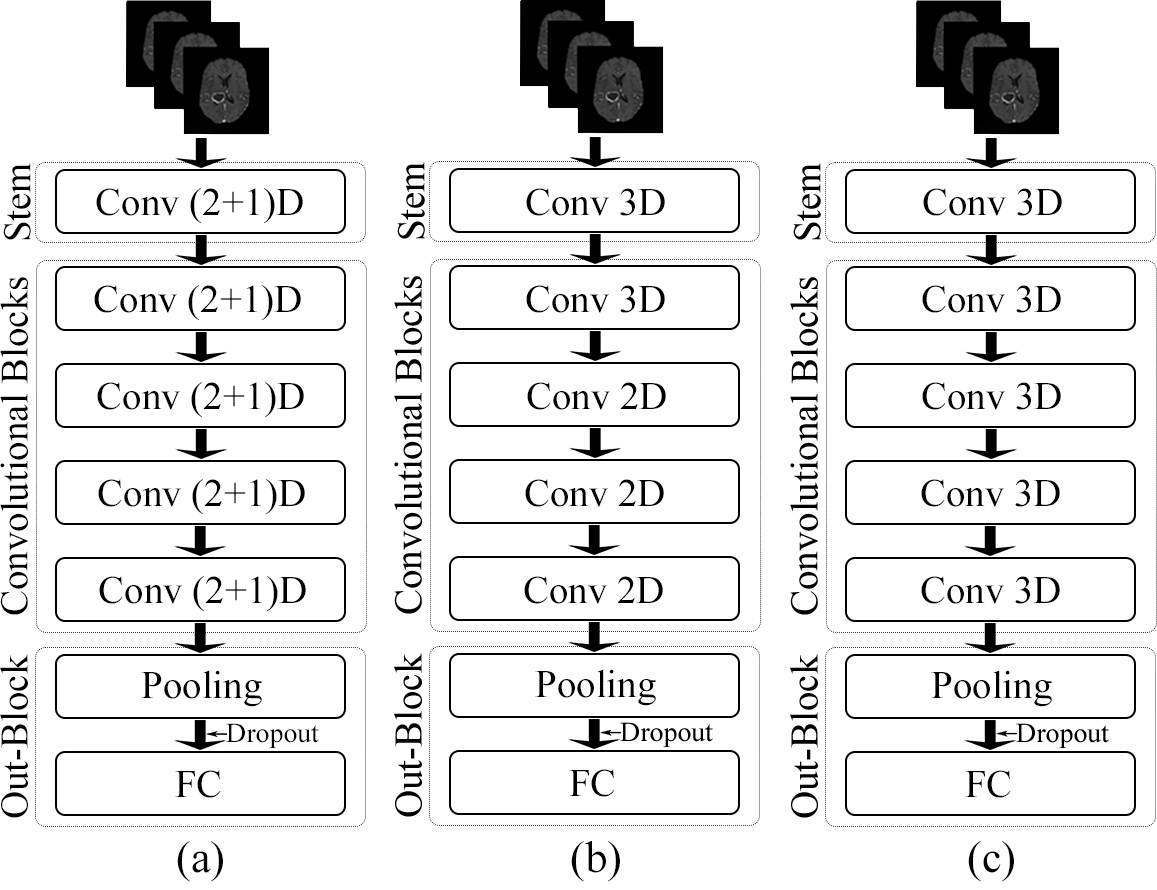Classification of Brain Tumours in MR Images using Deep Spatiospatial Models
A brain tumour is a mass or cluster of abnormal cells in the brain, which has the possibility of becoming life-threatening because of its ability to invade neighbouring tissues and also form metastases. An accurate diagnosis is essential for successful treatment planning and magnetic resonance imaging is the principal imaging modality for diagnostic of brain tumours and their extent. Deep Learning methods in computer vision applications have shown significant improvement in recent years, most of which can be credited to the fact that a sizeable amount of data is available to train models on, and the improvements in the model architectures yielding better approximations in a supervised setting. Classifying tumours using such deep learning methods has made significant progress with the availability of open datasets with reliable annotations. Typically those methods are either 3D models, which use 3D volumetric MRIs or even 2D models considering each slice separately. However, by treating the slice spatial dimension separately, spatiotemporal models can be employed as spatiospatial models for this task. These models have the capabilities of learning specific spatial and temporal relationship, while reducing computational costs. This paper uses two spatiotemporal models, ResNet (2+1)D and ResNet Mixed Convolution, to classify different types of brain tumours. It was observed that both these models performed superior to the pure 3D convolutional model, ResNet18. Furthermore, it was also observed that pre-training the models on a different, even unrelated dataset before training them for the task of tumour classification improves the performance. Finally, Pre-trained ResNet Mixed Convolution was observed to be the best model in these experiments, achieving a macro F1-score of 0.93 and a test accuracy of 96.98\%, while at the same time being the model with the least computational cost.
PDF Abstract


 Brain Tumor MRI Dataset
Brain Tumor MRI Dataset